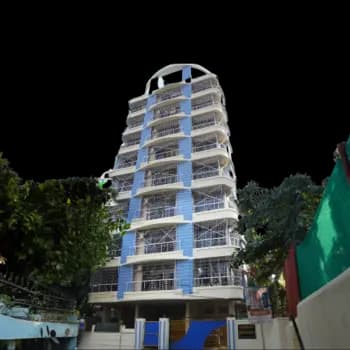Narcolepsy
Introduction
Narcolepsy is a sleep disorder and chronic neurological disorder. This psychological ailment is characterised by excessive daytime sleepiness, disruption of night sleep and muscle deterioration. The disorder can impair the working of a patient in routine and requires drastic changes in lifestyle for proper management.
Read on to learn more about Narcolepsy treatment, Narcolepsy symptoms and Narcolepsy causes. The blog also describes how narcolepsy is diagnosed and how narcolepsy is treated in such a manner that chances of relapse minimise.
What is Narcolepsy?
Narcolepsy is a rare neurological and sleep disorder characterised by extreme drowsiness and frequent need for naps during the day. This disorder, however, is not related to anxiety, depression or simply lack of sleep. The sleep disorder is characterised by an uncontrollable urge to sleep during the daytime, also called a “sleep attack”.
Narcolepsy vs Insomnia
Narcolepsy is a sleep disorder characterised by excessive sleeping at night and during the daytime. Insomnia, on the other hand, is characterised by lack of sleep or suffering from poor quality of sleep. Narcolepsy is often associated with neurological problems whereas insomnia is associated with stress, depression, poor lifestyle and other medical conditions.
Common Myths and Misconceptions
Myth 1: Narcolepsy is not a serious condition and does not pose any harm in routine.
Fact 1: False. If not treated at the right times, narcolepsy can have dangerous consequences. Muscle weakness gets worse and people can suffer from irreparable damage.
Myth 2: Every patient with narcolepsy falls more often than others.
Fact 2: False. Frequent falls are a symptom experienced by people who suffer from severe muscle weakness caused by narcolepsy. Not every patient suffering from the disorder experiences the same symptoms.
Myth 3: Patients suffering from narcolepsy sleep soundly all day long.
Fact 3: False. Patients suffering from narcolepsy take frequent naps of a maximum of 30 minutes and have an erratic sleep schedule.
Statistics and Facts
World Narcolepsy Day is observed on September 22 to raise awareness about the disorder. In India, narcolepsy is reported in 1 person out of 2,000 people. However, this number could be wrongly reported due to misdiagnosis and lack of awareness among people.
Types of Narcolepsy
- Type 1 Narcolepsy
This narcolepsy is diagnosed through low hypocretin levels or cataplexy with excessive daytime sleepiness. Hypocretin ( a chemical in the brain that enables a person to stay awake) is essential to maintain the wakefulness of a person after a proper sleep. In type 1 narcolepsy, a patient experiences sudden muscle weakness triggered by emotions and a disrupted sleep-wake cycle. - Type 2 Narcolepsy
Type 2 narcolepsy is characterized by extreme daytime drowsiness and sleepiness without cataplexy. Symptoms, in this case, are less severe and hypocretin levels remain stable. Patients do not experience any sudden muscle weakness. - Secondary Narcolepsy
This narcolepsy occurs when a person suffers from hypothalamus injury. Symptoms of secondary narcolepsy are excessive daytime and nighttime sleepiness. Patients usually end up sleeping for more than 12 hours a day which causes other psychological and mental health issues.
What Causes Narcolepsy?
Narcolepsy occurs in men and women equally. Symptoms are usually exhibited by patients between the age of 7-25. The majority of patients suffering from type-1 narcolepsy are diagnosed with low levels of hypocretin which is responsible for maintaining sleep-wake states. Other factors that could cause narcolepsy are:
- Autoimmune disorders can cause narcolepsy. The immune system mistakenly attacks hypocretin-producing cells which disturbs the sleep cycle. Auto-immune disorders are usually caused because of genetic factors and environmental conditions.
- Patients who have a family history of type-1 narcolepsy are more prone to develop the disorder.
- Brain injuries and other problems like tumours can also lead to a person developing narcolepsy. Certain researchers have also discovered that this disorder often follows a seasonal pattern.
What Are The Symptoms of Narcolepsy?
1. Daytime Sleepiness
Patients suffering from daytime sleepiness often struggle with staying awake during the night. They are not able to stay alert and often fall asleep suddenly during walking, sleeping, driving and so on. The duration of these episodes can last between 30 minutes to one hour refreshing a person.
2. Sudden Muscle Weakness
Also called Cataplexy, sudden muscle weakness is a prominent symptom of narcolepsy. Patients can suffer from slurred speech to complete muscle collapse. Triggers include laughter, excitement or even anger. Not every patient suffers from cataplexy but those who do can experience episodes several times a day in severe cases.
3. Hallucinations
Seeing vivid images or dream-like situations is a symptom of Narcolepsy. These are called hypnagogic when a person sees this during sleep and hypnopompic when a person is awake. These are unsettling experiences and often high in intensity.
4. Sleep Paralysis
Sleep paralysis can be a frightening symptom of Narcolepsy. Patients are unable to speak or move temporarily either when falling asleep or when waking up. The paralytic feeling lasts only a few minutes and a person can recall the feeling afterwards.
5. REM Sleep Changes
Patients suffering from Narcolepsy enter Rapid Eye Movement (REM) sleep faster than usual. They enter that phase within 15 minutes and can fall asleep in the same manner at any time during the day. Obstructive Sleep Apnea, insomnia and REM sleep behaviour disorder are other related sleep conditions.
How is Narcolepsy Diagnosed?
Diagnosing narcolepsy includes multiple tests and interview sessions. Doctors perform a clinical exam and review medical histories. Patients are often asked to maintain a two-week sleep journal. However, doctors most often suggest the following tests to understand brain activity:
1. Polysomnogram
Polysomnogram Test or PSG is an overnight sleep study test. Doctors measure brain activity and study muscle movement and breathing patterns to learn more about sleep quality.
2. Multiple Sleep Latency Test
A Multiple Sleep Latency Test (MSLT) is a sleep test conducted after the completion of an overnight sleep study. The test includes monitoring sleep in five nap sessions spaced two hours apart. The aim is to measure the sleep onset and learn about REM sleep occurrence.
How is Narcolepsy Treated?
Narcolepsy has no particular cure but it can be managed with medication and introducing certain lifestyle changes. More than the root cause of the problem, symptoms are addressed more aggressively.
1. Medication
Wakefulness-Promoting Agents: Certain drugs help promote wakefulness among patients. These drugs stimulate the central nervous system, reduce daytime drowsiness and improve alertness.
- Amphetamine-Like Stimulants: These drugs are prescribed to manage excessive daytime sleepiness. The level of neurotransmitters in the brain improves which increases alertness and fosters better focusing power. However, this medication must be consumed carefully owing to side effects like high blood pressure, drastic mood changes and so on.
- Antidepressants: Tricyclic antidepressants and selective serotonin-noradrenaline reuptake inhibitors improve the sleep-wake cycle. These drugs treat muscle weakness, suppress REM sleep and minimise hallucinations. Cataplexy, sleep paralysis and other deteriorating symptoms can also be controlled with this medication.
- Sodium Oxybate: Patients suffering from excessive daytime sleepiness are usually prescribed sodium oxybate. However, these are prescribed carefully due to the health risks they pose.
2. Lifestyle Changes
- Patients must opt for a regular sleep schedule. Therapists recommend completely avoiding daytime naps to improve sleep quality at night. However, in severe cases, short and scheduled naps can be taken to counter daytime sleepiness.
- The diet must be improved. Therapists recommend patients suffering from narcolepsy to avoid caffeine before bedtime. A ketogenic diet is recommended which is low in carbohydrates but high in healthy fats to avoid sleepiness during daytime.
- A more active lifestyle must be adopted which includes regular workouts. Alcohol and party drugs must not be consumed as they can hamper the sleeping pattern of an individual. A 20-minute workout session 4-5 hours before bedtime is helpful and promotes sound sleep.
- Relaxation techniques like meditation and deep breathing help a patient to calm down before sleeping. Regulating inhalation and exhalation is helpful for patients suffering from anxiety and depression.
- Safety measures are essential for patients suffering from narcolepsy. They must avoid driving and must take less stress as it can worsen the situation. Patients must inform their supervisors about the disorder to schedule naps and medication.
3. Personal Support System
Building a personal support system is essential. Friends and family must come together to help a patient who is more prone to psychological disorders. Patients must feel free to share their experiences with them and seek emotional support when needed.
Living with Narcolepsy
- Patients must learn to adapt to the challenges that accompany narcolepsy. Consistent counselling can help a person cope with all kinds of challenges.
- Maintaining a proper routine is the first step towards healing. To build a proper cycle, patients must make sure that they eat and workout properly while balancing work.
- A healthy lifestyle is essential. Adopting a proper work-life balance that enables a patient to feel better. Those who are travelling must inform their therapists so that the diet, work and workout plan to ensure a complete deep sleep.
- Seeking professional help when necessary is a must. Patients must not feel any shame in that he or she is suffering from a psychological disorder. Patients must always remember that seeking timely intervention is better than delaying it.
How to Support Loved Ones Suffering from Narcolepsy?
- Encourage your loved one to take therapy. Seeking professional help at the right time can prevent the worsening of the disorder.
- Educate yourself about the disorder so that it validates the patient’s fear. Encourage patients to participate in support groups to learn from other people’s experiences and more.
- Accompany the patient to the hospital or rehab centre when needed. Imposing oneself on the patient can make him or her feel uncomfortable.
- Do not force a person to take over-the-counter medication. Drugs that are prescribed to a patient often have side effects and risk of dependence. Therefore, seek professional help as soon as symptoms are exhibited.
Jagruti Treatment and Recovery
Therapists and mental health experts at Jagriti Rehab Centre offer the best treatment plans to patients. Customised treatment is provided to patients depending on the severity of the problem to ensure complete recovery and to prevent relapse.
The rehab centre also has expert nutritionists on the panel who make sure that necessary lifestyle changes are introduced. Cultural and religious factors are taken into consideration. They make a routine plan that is easy to follow and includes all the necessary activities.
Constant supervision of the nursing staff ensures that patients take their medication on time. Their vitals are also constantly monitored. Diagnostic tests are conducted under professional supervision to ensure correct diagnosis.
Hygienic living conditions are maintained at all times. Recreational activities are also included in the course of the treatment. The aim is to improve the compromised social skills of a person so that he or she can fit into society seamlessly.







